March 21st, 2017 by iisg_superadmin
We depend on nature for our health and well-being in what seems countless ways—from food, medicine, and shelter, to our quality of life. Yet when decision makers plan for a community’s future, there may be no concrete value ascribed to natural areas.
An IISG study supported by NOAA through the Indiana Department of Natural Resources, and Indiana Lake Michigan Coastal Program, has begun the process of defining the value of Indiana’s aquatic ecosystems.
“Ecosystem services are the benefits that people, communities, and economies receive from nature,” said Leslie Dorworth, IISG aquatic ecology specialist. “For example, a healthy food web in Lake Michigan is part of a thriving ecosystem, but it can also provide a benefit to those who engage in fishing.”
Dorworth, and Margaret Schneemann, IISG resource economist, sat down with 10 Indiana natural resource managers and decision makers to define coastal ecosystem services in the region. They identified the biggest threats to natural areas as nutrient pollution from a variety of sources, climate change, and physical changes to water bodies or water flow. The participants prioritized ecosystem services, including water purification, native flora and fauna, spiritual and aesthetic recreation, and the combination of erosion, sediment and flood control.
The list of priority coastal ecosystem benefits developed in this process became the driver for Dorworth and Schneemann’s literature search of studies in the Great Lakes region. They reviewed available economic value estimates of these coastal ecosystem services, finding only a few that included Indiana.
“We also found a mismatch in what ecosystem services were prioritized by coastal zone managers and those that are studied,” said Schneemann. “For example, there is a lack of research on spiritual and aesthetic values of the coastal zone, which is a top ecosystem service as identified by stakeholders along the Indiana coast.”
“The next step in this process is to work with Indiana coastal resource managers to refine research questions that when answered, will help them make decisions that are informed by what is important to people,” she added.
Illinois-Indiana Sea Grant is a part of University of Illinois Extension and Purdue University Extension.
January 13th, 2017 by IISG
For the month of January, the Sea Grant 50th is focusing on K to Gray education—yes, that includes everyone—and within IISG there is no shortage of resources for all ages.
Terri Hallesy who has been with the IISG education team for 13 years has seen teaching trends change over the years, but in the end, she knows it’s really very simple.
“I just enjoy working with all the dynamic, engaging specialists,” Hallesy says. “They each focus on diverse programs and target different audiences. What’s great is they’re always ready to collaborate using the latest and most relevant educational tools.”
Below we are highlighting five of the projects the education team has produced—in collaboration with specialists, other Sea Grants, as well as educators—that capture that cooperative spirit.
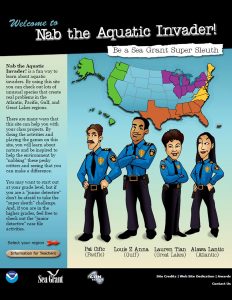 Nab the Aquatic Invader!
Nab the Aquatic Invader!
Launched in 2009, this website focuses on the suspects–aka the invasive species–in four regions of the country: Atlantic, Pacific, Gulf, and Great Lakes. In each region, visitors can see read interrogation interviews with the 10 Most Wanted AIS and learn their origin, problems they cause, and some control methods used to slow the spread of these species. The project was featured in the Smithsonian in 2010.
Collaborators included New York, Michigan, Wisconsin, Pennsylvania, and Ohio Sea Grants.
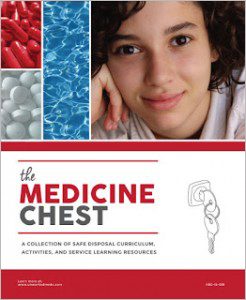 The Medicine Chest
The Medicine Chest
Illinois-Indiana Sea Grant’s (IISG), The Medicine Chest, invites high school students to metaphorically open up those doors and investigate what makes those chemicals harmful to people, pets, and the environment when improperly disposed. The curriculum was updated last year.
Collaborators included Pennsylvania Sea Grant, U.S. EPA Great Lakes National Program Office, and Paul Ritter and Eric Bohm, P2D2 Program Administrators.
Sensible Disposal of Unwanted Medicines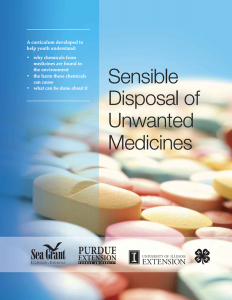
When medications are flushed down the toilet, wastewater treatment plants can’t always filter out the harmful chemicals that can affect wildlife and even get into drinking water supplies. This 4-H guidebook and curriculum, designed for informal education audiences, provides five inquiry-based lessons to help high school youth understand the harmful effects of improper disposal of medicines and what they can do to help.
Collaborators included 4-H and Penn High School, Mishawaka, Indiana.
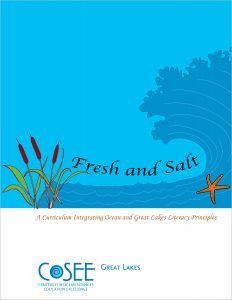 Fresh and Salt
Fresh and Salt
Fresh and Salt is a collection of activities that enhance teacher capabilities to connect Great Lakes and ocean science topics. Designed to be used by teachers in grades 5-10, this curriculum provides an interdisciplinary approach to ensure that students achieve optimum science understanding of both Great Lakes and Ocean Literacy Principles.
Collaborators included Centers for Ocean Science Education Excellence and Ashland University.
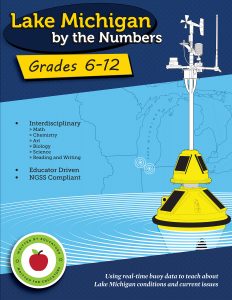 Lake Michigan by the Numbers
Lake Michigan by the Numbers
This curriculum was created by teachers who attended a day-long workshop to learn how to incorporate buoy data into their classroom instruction. They created these data-rich, STEM-based lesson plans that boost understanding of Great Lakes issues by incorporating real-time data from Great Lakes buoys.
Collaborators included Indiana Department of Natural Resources, Lake Michigan Coastal Program, and Center for Great Lakes Literacy.
Illinois-Indiana Sea Grant is a part of University of Illinois Extension and Purdue Extension.
May 18th, 2015 by iisg_superadmin
It was a chilly May 12th, cloudy and windy as well. But 29 sixth graders from West Side Middle School in East Chicago, Indiana came to nearby Roxana Marsh to experience what the outdoors has to offer, learn new things, help with the cleanup and restoration of the natural area, and enjoy the afternoon.
Roxana Marsh is part of the larger Grand Calumet River Area of Concern, which has been undergoing dredging through the Great Lakes Legacy Act over the past six years. The marsh section of the project was completed three years ago with the removal of 600,000 cubic yards of sediment.
This accomplishment was celebrated with a press event attended by government officials and local school children. Those middle schoolers left their legacy in perennial plants that are now thriving along the marsh. This year’s class is the third group of gardeners in what may well become an annual tradition.
In addition to planting natives, the students learned the basics of birding, explored the small community of life in sediment, and manned trash bags for garbage detail. There were water beetles, egrets, killdeer, toads, dragonfly nymphs, and more to experience.
Throughout their afternoon tour, the 6th graders were guided by experts from Audubon Chicago Region, U.S. EPA, The Nature Conservancy, Shirley Heinz Land Trust, Indiana’s departments of Natural Resources and Environmental Management, Northwest Indiana Regional Planning Commission, Dunes Learning Center, and Illinois-Indiana Sea Grant.
The first surprise for the students was just how close the natural area is to their school and their world. “They had no idea that this was here or about the dredging and restoration, said teacher Linda Padilla. “They were sure we would be going someplace farther away.”
Last June, she took part in a one-day workshop at Purdue University Calumet, which introduced the Helping Hands curriculum to 25 local educators. Helping Hands activities are ideally suited to schools in Areas of Concern that are going through the cleanup process—they provide opportunities to directly engage students in the larger project. The workshop also included a visit to several sites on the Grand Cal to see the dredging work in progress as well to walk around a finished site—Roxana Marsh.
Caitie McCoy, IISG environmental social scientist, has been helping keep residents informed during the dredging. She saw the Grand Cal project as an opportunity to connect students with their environment.
 “The cleanup and restoration of the Grand Calumet River is brightening the northwest Indiana landscape,” she explained. “This work transforms space into places that students can visit, perform stewardship work, and develop pride in their local environment. Environmental educators teach students that nature is in their backyard, but for these students, high quality nature is in their backyard, right here in East Chicago, Indiana.”
“The cleanup and restoration of the Grand Calumet River is brightening the northwest Indiana landscape,” she explained. “This work transforms space into places that students can visit, perform stewardship work, and develop pride in their local environment. Environmental educators teach students that nature is in their backyard, but for these students, high quality nature is in their backyard, right here in East Chicago, Indiana.”
At one point, the Grand Cal was referred to as the most polluted river in the country. Through the remediation process, more than 2,000,000 cubic yards of sediment have been removed from this waterway, which runs through a highly-populated region. If funding from the Great Lakes Restoration Initiative continues and non-federal cost share partners are secured, the river work could finish as early as 2019.
January 29th, 2015 by iisg_superadmin
Water gardeners—keep your eyes open this season for invasive plants that may be lurking at your neighborhood garden store. In recent years, Illinois and Indiana DNR have both added nearly 30 new species to their lists of banned aquatic plants, but some may still be available for sale.
If you spot one of these invaders, be sure to tell the store manager. Some species can be hard to identify and larger stores may not even know these plants are on their shipment list. That’s exactly what was happening at a Petco in Carbondale, IL, where Karla Gage found Brazilian elodea—aka Egeria densa—while browsing with her family.
 “I notified the department manager that this was listed as an injurious species in Illinois, and I sent a follow up email to the store manager,” said Karla, coordinator of the River to River Cooperative Weed Management Area, which brings together federal, state, local, and private partners to tackle invasive plants in southern Illinois. “I received a call from the corporate contact, who stated that Petco stores in Illinois would no longer receive or be able to order Brazilian elodea. Previously, Carbondale stock had been on “auto-replenish,” so the stores never actually ordered Brazilian elodea. Current stock is being disposed of responsibly.”
“I notified the department manager that this was listed as an injurious species in Illinois, and I sent a follow up email to the store manager,” said Karla, coordinator of the River to River Cooperative Weed Management Area, which brings together federal, state, local, and private partners to tackle invasive plants in southern Illinois. “I received a call from the corporate contact, who stated that Petco stores in Illinois would no longer receive or be able to order Brazilian elodea. Previously, Carbondale stock had been on “auto-replenish,” so the stores never actually ordered Brazilian elodea. Current stock is being disposed of responsibly.”
“Thanks to Admin Code 805 and the quick response of Petco,” she added, “the risk of an introduction of Brazilian elodea into natural systems has been reduced.”
The Illinois and Indiana rules also make it illegal to gift, barter, exchange, loan, or transport the any listed species. Recent additions to the list—27 plant species in Illinois and 28 in Indiana—were chosen based on the results of a risk assessment tool developed in Indiana by the Aquatic Plant Working Group. The tool evaluates species based on factors like ability to thrive in the Great Lakes and difficulty to control. IISG’s aquatic invasive species (AIS) team organized and facilitated the group, which included representatives from the aquatic plant industry, aquarium and water garden hobbyists, state agencies, academia, and non-governmental organizations.
Visit our AIS page for more information about invasive plants and animals on the market and what water gardeners and aquarium hobbyists can do to prevent their spread.
***Photo courtesy of Graves Lovell, Alabama Department of Conservation and Natural Resources, Bugwood.org.
August 15th, 2014 by iisg_superadmin
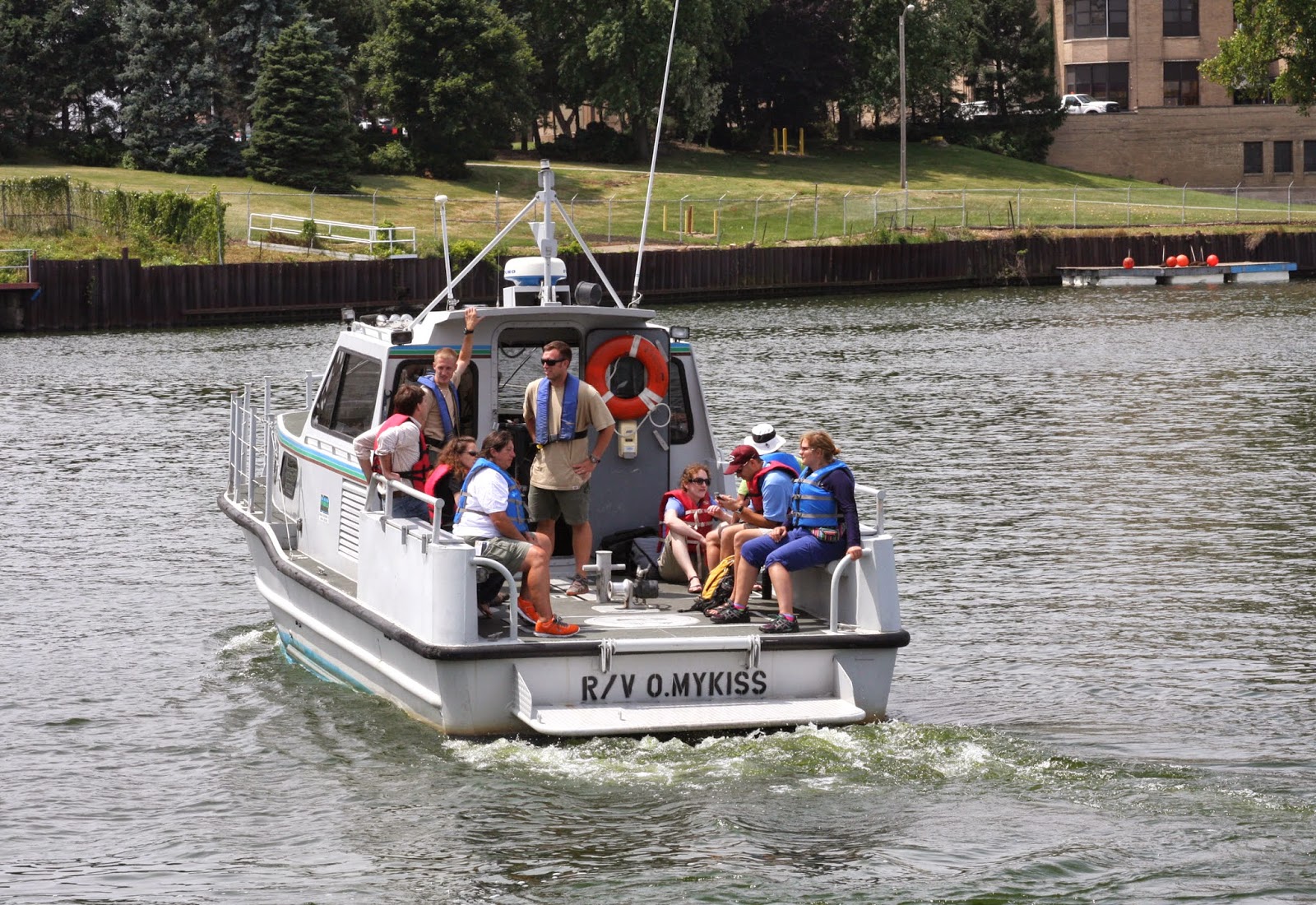 Fourteen teachers from Illinois and Indiana are hard at work developing new science lessons that incorporate real-time data from the Michigan City buoy after a training workshop held last week at Purdue North Central.
Fourteen teachers from Illinois and Indiana are hard at work developing new science lessons that incorporate real-time data from the Michigan City buoy after a training workshop held last week at Purdue North Central.
During the day-long workshop, IISG’s education and research teams, along with Purdue University’s Cary Troy
, introduced teachers to the environmental monitoring buoy, the data it collects, and how researchers are using the data to better understand the nearshore waters of Lake Michigan.
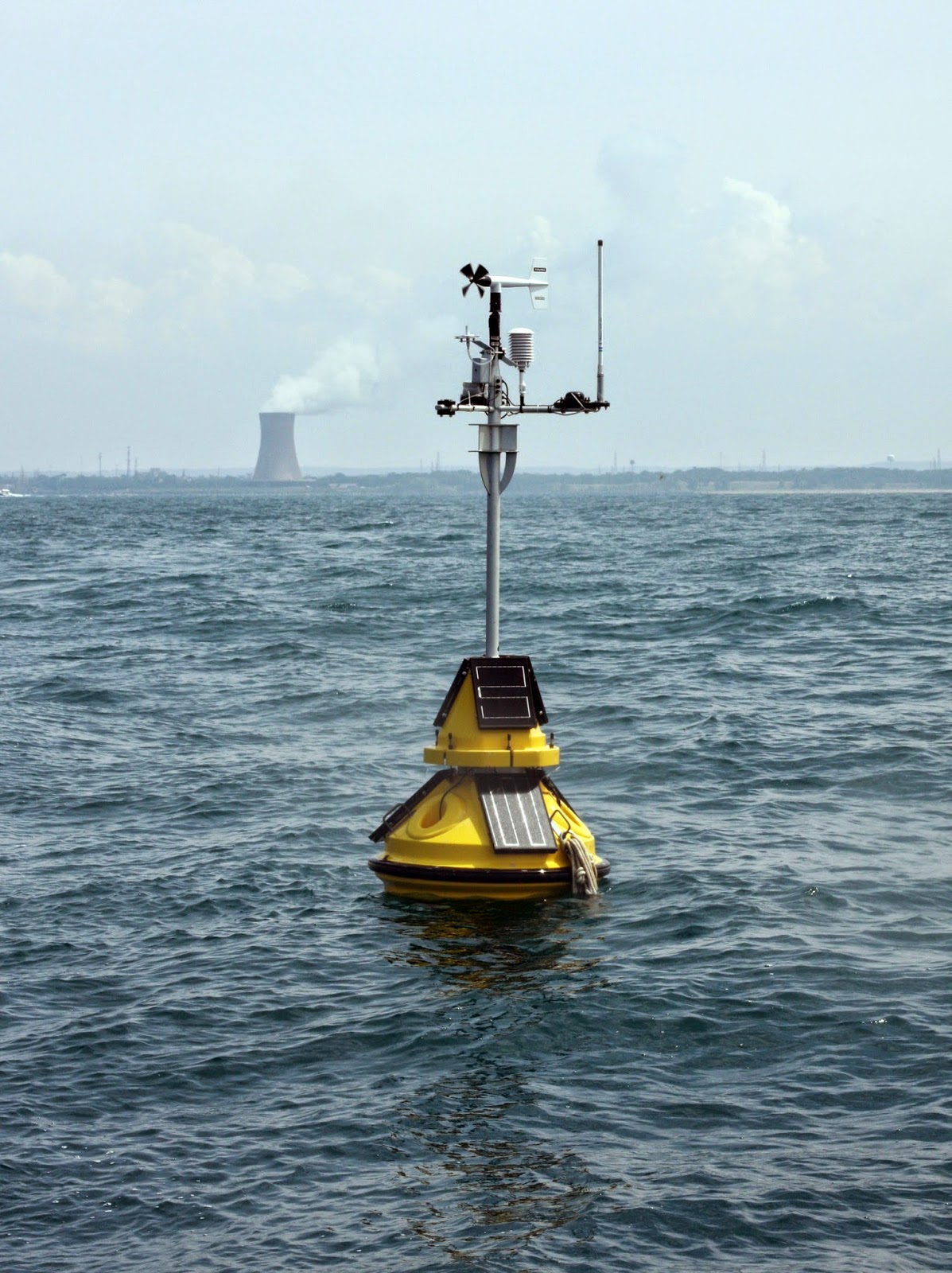 The highlight of the workshop for many was the boat ride four miles into Lake Michigan to see the buoy first-hand—in smaller groups due to the size of the boat. The trips also gave teachers the opportunity to talk more with researchers and staff from the Indiana Department of Natural Resources(DNR) about the buoy and other data collection methods used to monitor fisheries, understand lake dynamics, and improve water safety.
The highlight of the workshop for many was the boat ride four miles into Lake Michigan to see the buoy first-hand—in smaller groups due to the size of the boat. The trips also gave teachers the opportunity to talk more with researchers and staff from the Indiana Department of Natural Resources(DNR) about the buoy and other data collection methods used to monitor fisheries, understand lake dynamics, and improve water safety.
The teachers will work together to develop at least six curriculum activities that improve STEM education—science, technology, engineering, and math—and boost understanding of Great Lakes issues. These won’t be complete till early next year, but the teachers already have big ideas for how to integrate the buoy data into their classrooms.
Several hope to use information on wind speed and water currents to improve their weather units. Others plan to use data collected by the buoy’s thermistor chain, which measures temperatures at different depths, to pinpoint the likely habitats of specific fish species and determine whether invaders like Asian carp could make a home in Lake Michigan. Some even expressed interest in having students compare buoy data with environmental characteristics collected on land to better understand solar radiation and seasonal changes.
The final lesson plans will be available on the IISG website.
Funding for the workshop was provided in part by the Indiana DNR Lake Michigan Coastal Program. Special thanks to the DNR staff at the Michigan City field office for taking the participants out on the lake.
June 20th, 2014 by iisg_superadmin
Two years ago, a group of middle school students planted native seedlings along the banks of Roxana Marsh to celebrate the successful cleanup of the waterway. On Monday, those same students returned for another day of learning and service to find the marsh in bloom – thanks in large part to their efforts.
“It’s good to know that we did something phenomenal to help our environment,” said Sandra Olivarria, one of the East Chicago Lighthouse Charter School students participating in the event.
Monday morning’s stewardship began with speeches from state and local officials, including Indiana Representative Earl Harris, Senator Lonnie Randolph, and Mayor Anthony Copeland of East Chicago.
“We need to start to get everyone involved in this kind of project at an early age so that when you grow up, you become part of something that keeps you involved for the long term,” Representative Harris said.
 The rest of the day was devoted to hands-on activities that encouraged students to get familiar with the plants and animals inhabiting the area. The class looked at native and non-native plant species growing around the marsh, then checked on the flowers they had originally sprouted in their classroom. The kids worked together to pull up the invasive clover that had grown around their plantings – a little tricky at times, they said, but “pretty fun, too.”
The rest of the day was devoted to hands-on activities that encouraged students to get familiar with the plants and animals inhabiting the area. The class looked at native and non-native plant species growing around the marsh, then checked on the flowers they had originally sprouted in their classroom. The kids worked together to pull up the invasive clover that had grown around their plantings – a little tricky at times, they said, but “pretty fun, too.”
“It feels so good to come back and see what we did two years ago, and see it all grown and restored!” one student exclaimed.
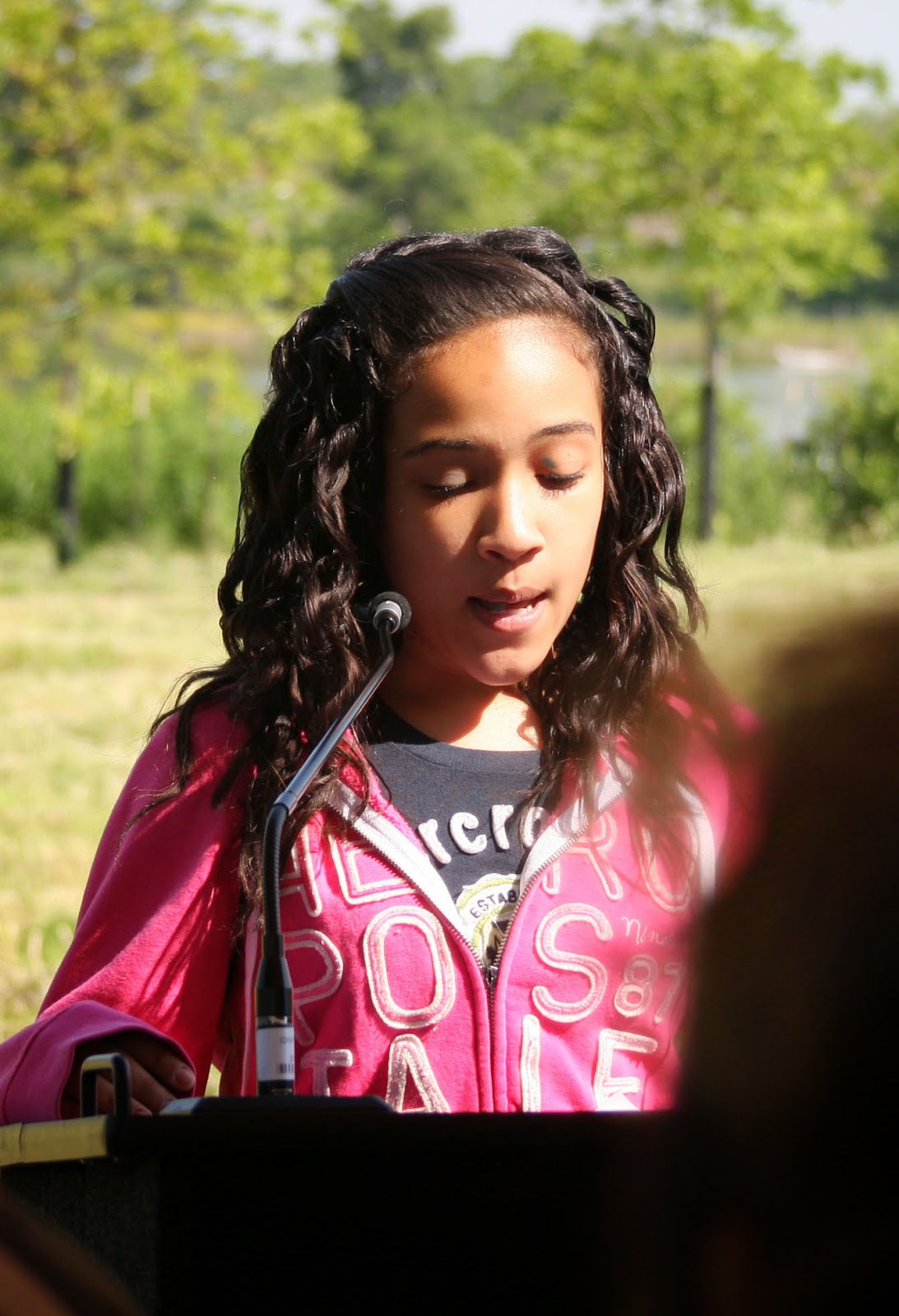 Down by the water, volunteer scientists helped students take samples of mud from the marsh to collect bottom-feeding aquatic animals that lived there. The students identified various species of worms, snails, larvae, and tadpoles, and were delighted at the chance to handle these small creatures.
Down by the water, volunteer scientists helped students take samples of mud from the marsh to collect bottom-feeding aquatic animals that lived there. The students identified various species of worms, snails, larvae, and tadpoles, and were delighted at the chance to handle these small creatures.
The class also cleaned up trash from the marsh and along Roxana Drive, helping to beautify the area.
“I’m really proud of all the work the students performed today,” said IISG environmental social scientist Caitie McCoy. “It was thrilling to have them come back and take care of a beautiful environment that they helped create. Today, nature was our classroom, and I think the students learned a lot.”
Roxana Marsh is now home to blue herons, wild irises, and all sorts of aquatic life. But it wasn’t always that way. Located on the Grand Calumet River, the marsh was heavily polluted for more than a century with byproducts of heavy industry around East Chicago. Federal and state agencies worked to dredge the river, removing contaminated sediment and restoring the surrounding habitat as part of the U.S. EPA’s Great Lakes Legacy Act.
 Monday’s restoration activities and press event brought together partners from the US EPA Great Lakes National Program Office, US Fish and Wildlife, Indiana Department of Environmental Management, Indiana Department of Natural Resources, Illinois-Indiana Sea Grant, The Nature Conservancy, and Shirley Heinz Land Trust. The Roxana Marsh cleanup and Caitie’s work to improve community engagement here and at other Areas of Concern is possible because of the Great Lakes Restoration Initiative and the Great Lakes Legacy Act.
Monday’s restoration activities and press event brought together partners from the US EPA Great Lakes National Program Office, US Fish and Wildlife, Indiana Department of Environmental Management, Indiana Department of Natural Resources, Illinois-Indiana Sea Grant, The Nature Conservancy, and Shirley Heinz Land Trust. The Roxana Marsh cleanup and Caitie’s work to improve community engagement here and at other Areas of Concern is possible because of the Great Lakes Restoration Initiative and the Great Lakes Legacy Act.
Teachers interested in integrating AOC issues into their classroom can find activities and other resources in our Helping Hands curriculum.
May 29th, 2014 by iisg_superadmin
The Illinois and Indiana Departments of Natural Resources, along with several other state, local, and federal agencies, are joining forces to coordinate a survey of Calumet Harbor and Lake Michigan waters. The efforts will help search for and combat aquatic invasive species.
“The exercise – including intensive netting and electro-fishing – will be the first of its kind utilizing provisions of the new Mutual Aid Agreement for Combating Aquatic Invasive Species, signed at the Council of Great Lakes Governors meeting on April 26 in Chicago…
Crews coordinated by the Illinois and Indiana Departments of Natural Resources are deploying boats on Chicago’s Calumet Harbor, and on adjoining waters of Lake Michigan on both sides of the Illinois-Indiana state line, for electro-fishing and netting to determine whether invasive Eurasian ruffe are present.
‘Aquatic invasive threats know no national or state boundaries. Our ability to sample fish communities, respond quickly, and effectively communicate on efforts could be critical in the future to respond to a threat within the Great Lakes basin,’ said Indiana DNR Aquatic Invasive Species Coordinator Eric Fischer.
Eurasian ruffe, an eastern European species of fish, have been found in Lake Superior since the mid-1980s, have a similar diet and feeding habits of native fish, and could present problems for the food web in Lake Michigan. Researchers detected environmental DNA of Eurasian ruffe in Calumet Harbor last year.”
Read the complete article at the link above.
November 20th, 2013 by Irene Miles
Working with Illinois and Indiana DNR, Illinois-Indiana Sea Grant led the development of a risk assessment tool to evaluate species based on their potential to be or become invasive. That tool and the resulting list of species led to the creation of a rule prohibiting the sale of 28 invasive aquatic plants in the state of Illinois.
“Plant species were chosen based on the results of a risk assessment tool developed in Indiana by the Aquatic Plant Working Group. The tool evaluates species based on factors like ability to thrive in the Great Lakes and difficulty to control. At the request of Indiana Department of Natural Resources, Illinois-Indiana Sea Grant organized and facilitated the group, which included representatives from the aquatic plant industry, aquarium and water garden hobbyists, state agencies, academia, and non-governmental organizations. Their efforts led to a rule approved last year that bans the sale of 28 invasive aquatic plants in Indiana.
‘It is important to have consistent regulations across the Great Lakes Basin. We want our policies to be consistent with our neighbors since invasive species don’t respect political boundaries,’ said Kevin Irons, aquaculture and aquatic nuisance species program manager for Illinois DNR. ‘Prevention is the first and cheapest way to protect Illinois from aquatic invasive plants, and risk assessment tools like the one built in Indiana allow us to identify and control high risk species without unduly regulating the industry.'”
Read the complete article at the link above, and read about the similar Indiana ban in the Winter 2012 edition of The Helm.
October 31st, 2013 by Irene Miles
The Michigan City real-time monitoring buoy, jointly owned and operated by Illinois-Indiana Sea Grant and the Purdue University Department of Civil Engineering, is out of the water for the 2013 season. This year, the buoy was deployed for 154 days, reporting data every 10 minutes around-the-clock. Over 3,400 people visited the buoy website during deployment, with an average of 18 hits per day. As one user put it, “Many, many of us have found the information as nothing less than terrific! Sailors like myself, fisherman like my dock neighbor, and so many pleasure boaters from Michigan City, Burns Harbor like to know what to expect once we leave the harbors.”
Buoy-watchers will have more to look forward to in 2014, as this winter the buoy will be getting an upgrade. Thanks in part to a grant from the Indiana Department of Natural Resources Lake Michigan Coastal Program awarded to IISG’s Tomas Hӧӧk, the buoy will broadcast real-time temperatures at different depths during the 2014 season and beyond. The buoy has always collected surface water temperature, but now it will also collect temperatures approximately every three feet from the surface to the bottom of the lake.
“We are very excited to install this chain of temperature loggers”, said Carolyn Foley, IISG assistant research coordinator who will help implement the new chain. “A number of groups told us they would use this information, from kayakers wanting to know if it’s warm enough to go for a paddle to anglers wanting to know where the best fishing will be.”
In addition to installing the new temperature loggers, IISG education staffers Terri Hallesy and Robin Goettel will work with Indiana educators to develop data-based lesson plans. IISG outreach staff, including Angela Archer and Leslie Dorworth, will also attend at least one outdoor show in northwestern Indiana to get direct feedback on ways to improve the buoy website for future seasons.
We would like to hear from anyone who uses the buoy data, particularly anglers, paddlers, and others who use southern Lake Michigan for recreation, as well as educators interested in using buoy data in their classrooms. If you 1) are an educator in grades 8-12 interested in participating in a workshop to acquire data sets for teaching and to develop lesson plans with buoy data, 2) have feedback related to improving the buoy website, and/or 3) would like to suggest an outdoor show for us to attend, please send us an email (iisg@purdue.edu) with “Buoy feedback” in the subject line. We expect to redeploy buoy in mid-May 2014.
Special thanks to the staff of the Indiana DNR Michigan City Field Office for their help deploying and retrieving the buoy.












